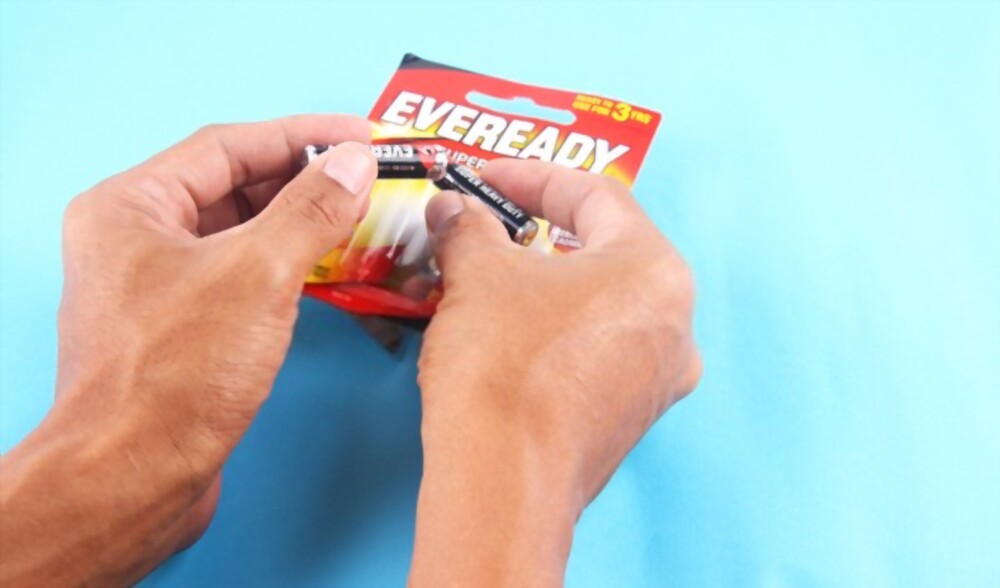There are two commonly accepted likelihood of confusion survey formats, which are known as the “Eveready” format, and the “Squirt” format. This article addresses Eveready surveys.
For information on Squirt surveys, please visit our “Using the Squirt Survey Format to Measure Likelihood of Confusion” page.
Eveready Survey Format
The name “Eveready” comes from a 1976 survey in Union Carbide Corp. v. Ever-Ready, Inc. The plaintiff, Union Carbide, sought action over the use of the mark EVEREADY. Union Carbine had been selling batteries, flashlights, and miniature bulbs under its trademark EVEREADY when the defendant began to sell similar products, including miniature light bulbs. Union Carbide requested “an injunction against Ever-Ready’s use of the term Ever-Ready on or in connection with the advertising or sale of electrical products.”[1]
To examine this issue and “to establish likelihood of confusion between the defendant’s lamps and the plaintiff’s products, [the] plaintiff submitted a survey in which the respondents were shown a picture of the defendant’s lamp.”[2] Respondents were asked who they think puts out the product shown. The survey results indicated that there was an appreciable likelihood of confusion between EVEREADY and Ever-Ready.
The Eveready survey method is most often used in matters involving well-known marks, so that “… the senior mark is top of mind, i.e. highly accessible (internally available) in memory, enhancing the likelihood that it will be cognitively cued by a similar junior use.”[3]
In cases of forward confusion, the Eveready survey format typically exposes respondents to a junior mark to see if the junior mark calls to mind a senior mark that is already in the minds of consumers. In cases of reverse confusion, the Eveready survey format might expose respondents to a senior mark to determine whether that mark calls to consumers’ minds a well-known junior mark.
An Example of the Eveready Survey Format
Voice of America (VOA) is a news source funded by the United States government and owned by the Broadcasting Board of Governors (BBG) that has provided news and other information since 1942. Robert Namer, an individual, used “Voice of America” as the name of his company, radio program, and website domain (www.thevoiceofamerica.com). Both the Voice of America operated by the BBG and Mr. Namer used “Voice of America” to provide news. In 2000, the BBG sent Mr. Namer a letter demanding that he cease use of the name. Several months later, the BBG submitted a complaint and Mr. Namer was ordered to transfer the domain name “thevoiceofamerica.com” to the BBG.[4] Mr. Namer then filed a lawsuit against the BBG and VOA.
In the matter of Robert Namer v. Broadcasting Board of Governors and Voice of America, each of the parties argued that they should be able to use the name “Voice of America” to represent their services. The BBG claimed that Mr. Namer’s audience members could be confused by the similarities between Mr. Namer’s use of the domain, “www.thevoiceofamerica.com” and the BBG’s “Voice of America” service mark.
Dr. Isaason’s Eveready Survey
Dr. Bruce Isaacson conducted an Eveready survey to measure likelihood of confusion between the two marks.
Dr. Isaacson’s likelihood of confusion Eveready survey interviewed respondents ages 18 and older who had visited a website to read political or economic news or commentary in the past month. The study was conducted online. Respondents were shown one of two images, either Mr. Namer’s “thevoiceofamerica.com” website, the test version, or a website that replaced “thevoiceofamerica.com” with a different name, the control version. Survey respondents were shown either the test or control version of Mr. Namer’s website. Respondents were never shown any website or images from the Voice of America website operated by the BBG.
Respondents were asked several questions to measure the likelihood of confusion in accordance with the Eveready survey format. For example, respondents were asked what company, organization, or person operates the website they were shown.
A notable percentage responded that they believed that Mr. Namer’s website was operated by, or affiliated or connected with, BBG’s Voice of America. These results indicated that there was a likelihood of confusion between the junior user, thevoiceofamerica.com, and senior user, Voice of America.
As a result of Dr. Isaacson’s likelihood of confusion Eveready survey, and other evidence, the court granted BBG’s request for a permanent injunction, barring Mr. Namer from the use of “Voice of America.”
Conducting Your Likelihood of Confusion Survey
For help with your next Eveready survey to measure likelihood of confusion, contact the survey experts at MMR Strategy Group.
[1] “Union Carbide Corporation, Plaintiff-appellant, v. Ever-ready Incorporated, a Corporation, and Mark Gilbert, An individual, Defendants-appellees, 531 F.2d 366 (7th Cir. 1976).” Justia Law. N.p., n.d. Web. 17 July 2017. http://law.justia.com/cases/federal/appellate-courts/F2/531/366/203240/.
[2] Handelman, Jeffery A. Guide to TTAB Practice. New York: Wolters Kluwer Law & Business/Aspen, 2017. 18-20. Print.
[3] Jerre B. Swann, Likelihood of Confusion, in Trademark and Deceptive Advertising Surveys: Law, Science,and Design (2012) at 53, American Bar Association.
[4] Beise, Cheryl, J.D. “Website Operator Barred from Using “Voice of America” Mark.” Law News | Law Daily Reporting Suite — Wolters Kluwer Law & Business. Intellectual Property Law Daily, 7 Nov. 2014. Web. 18 July 2017.
Kimberly White
Research Director
MMR Strategy Group
